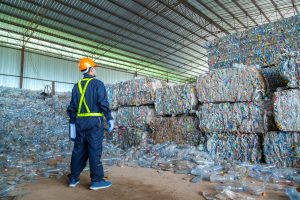Five Essential Findings from the Recently Released Re-shaping Plastics – Pathways to a Circular, Climate Neutral Plastic System in Europe
The publication of the peer-reviewed 2022 study Re-Shaping Plastics by Systemiq provides key insights into the best levers to drive change across four of the most important plastic-using sectors in Europe: packaging, household goods, automotive, and construction.
The “ReShaping Plastics” study draws on inter-disciplinary analyses carried out by researchers, civil society organizations, companies, universities, and government agencies. It has been guided by an independent Steering Committee and Expert Panel with representation from government, industry, academia, and civil society. At the heart of the study is a data-driven model of the European plastics system, which allows the research team to assess the impact of different interventions and system scenarios from 2022 to 2050. This scenario analysis produced five essential findings:
- The European plastics system is already adapting to address the challenges of circularity, but there is still room for improvement to achieve the goals of the Circular Plastics Alliance or European Green Deal.
- There is no “silver bullet” solution to significantly reduce waste disposal and GHG emissions. Upstream and downstream solutions are complementary and are most effective when deployed together.
- Ambitious adoption of circular economy approaches in the plastics value chain – i.e. applying upstream and downstream solutions together – can drive significant change in the next decade and beyond.
- In addition to proven circular economy approaches, there are multiple less mature pathways to develop and deploy innovative technologies and approaches that further decouple plastic from fossil fuel feedstocks, for example shifts to renewable energy and the scale-up of green hydrogen production, especially in the plastics manufacturing sector.
- The next three to five years are a critical window for action.
The study finds that circularity levers are the fastest, most affordable, most effective, and most reliable method of reducing waste, and most benefits can be achieved before 2040. Circularity also has a positive impact on employment levels. Achieving goals requires concurrently scaling up the following:
- Elimination of unnecessary plastic, driving reuse initiatives, and developing new delivery models have the potential to reduce almost 5 Mt of plastic waste per year by 2030
- Mechanical recycling across all sub-systems, will require revised design for recycling, as well as scaling the entire recycling value chain, including collection and sorting.
- Chemical recycling, which can scale to 3 Mt by 2030, giving rise to a steep change in system circularity, should be used to tackle the hardest to address waste streams, thereby enabling circularity for food packaging that cannot meet the food safety and hygiene requirements for mechanical recycling.
URLs
Re-shaping Plastics – Pathways to a Circular, Climate Neutral Plastic System in Europe



